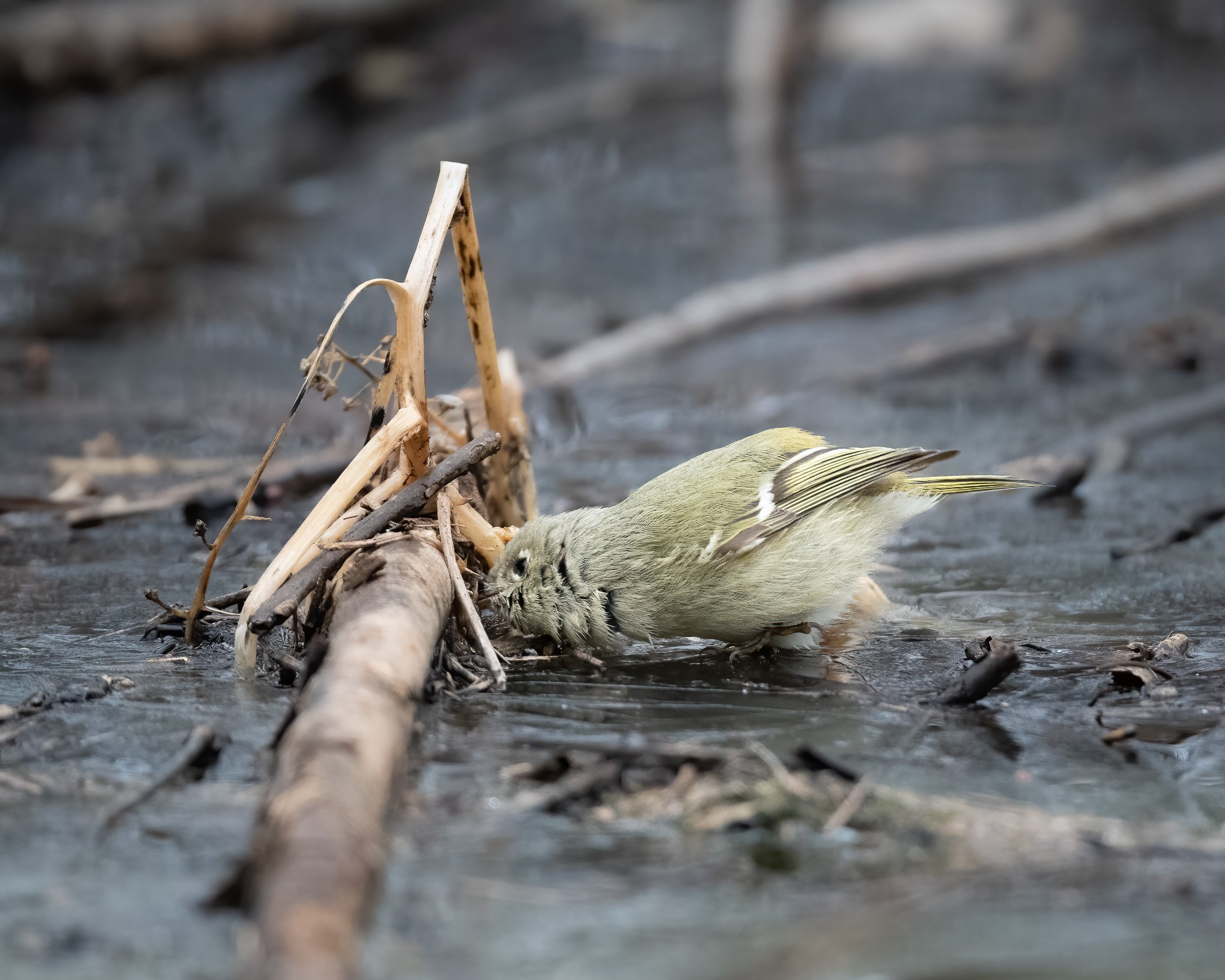The inhabitants of Earth’s northern hemisphere, self-included, collectively crest the daylight curve in June, and from there we enjoy the warm rush of late summer and autumn. But as we descend into the cold, a sort of heaviness begins to make itself known. The days shorten, colors fade to browns and grays, and as the weight of winter builds, I catch myself holding my breath. I grip the safety bar of this seasonal roller coaster a little tighter and focus my gaze forward to the winter solstice, because I know the dark intensity will inevitably peak on December 21st. Once that longest night is over - all fourteen hours, thirty minutes, and six seconds of it at 38.26 degrees north latitude where I stand as we circle the sun - I exhale. I know we have reached the bottom of the trough, and we are beginning our ascent into spring.
Although technically the solstice marks the beginning of winter, a new lightness comes almost immediately. By the turn of the new year, it just feels different when I go outside. I am sure some of my experience is placebo, but not entirely. Real changes are already occurring. By January 1, we have gained only three minutes and forty-three seconds of daylight, but nature notices. The birds notice. Keenly aware of the lengthening days, they become suddenly more active, more alive. Now at month end, we have added almost forty-six minutes. As I crunch the frozen path, I can sense their increased energy, and I find myself a little more alive, too.
This year as the sunlight curve and my spirits bent upward, I decided to take on a small challenge to kindle that spark, that new light. I mentally committed to finding one hundred species of birds in January - a very bird-nerdy thing to do. The hundred birds in January challenge is not my creation - it is a “thing” among birders, just not a thing I had ever chosen to do until now.
January bird #100, a ruby-crowned kinglet (Corthylio calendula)
Attempting to tick off one hundred species of birds in January is just another of the many silly games we humans invent, but a wise teacher once told me that what we are really doing is creating opportunities to observe ourselves. So I decided that while I directed my camera’s lens at the hedges, trees, water, and sky, I would direct a second lens of mindfulness inward. I decided to watch myself watching the birds. A game within a game.
Interesting species appeared almost immediately, both avian and cognitive. Early on I found short-eared owls (#3) prowling grassy fields, and in my own mind I found strange twinges of self-consciousness floating, like the owls, just visible above the tall grasses. Perhaps I should keep this little game to myself. Let’s be honest: birding is not something the cool kids do. I am all for photographing odd ducks, but I would rather not be seen as one.
I am all too familiar with this taxon of the mental machinery, though. Just another of the innumerable species of self-criticism, and thus I managed to release this irrational resistance almost as quickly as my short-eared owl vanished silently into the darkness. People play all sorts of ridiculous games. I can have my fun too, and I am not in middle school anymore!
Before I knew it I had reached fifty birds and it was not yet mid-month. Energized by the quick wins, I thought to myself, this hundred birds thing is going to be easy! But then I noticed my initial excitement quickly dampened by just a touch of anxiety as I considered the relative difficulty of finding fifty more - a subtle feeling like the tiny golden-crowned kinglets (#15) zipping around high in the treetops, hard to get a good look at, but making their presence known with their incessant twittering. Sure, it is just a silly game, but what if I lose?!
Bird number fifteen for the year, a golden-crowned kinglet (Regulus satrapa), much more abundant locally than the ruby-crowned
No, failure was not an option. Failure is bad. Failures, even small ones, are unacceptable. Failure is not about the birds. Failure is personal. I noticed that awareness of this intrusive feeling (and knowledge of its absurdity) did not make it go away. This anxiety around failing, even at silly self-imposed challenges, was a little more persistent. This feeling of failure was to be avoided. I needed a strategy.
My objective clearly defined, I watched myself begin to strategize. On Global Big Day, during the peak of spring migration, my goal is always to find one hundred species in twenty-four hours. For this challenge I am allowing the whole month. But in the January cold, all those dozens of migrants are thousands of miles away. Many species depart in the fall for warmer habitats. But, south is relative, and a few new birds find their way here as the weather turns cold. Of those comparative few, most are waterfowl. I realized that if I were to succeed, I would have to find all the ducks. The path to victory would be found on the water, so to ponds and puddles, lakes and rivers I went.
Between my time scanning bodies of water, peering through the heat distortion trying to distinguish lesser from greater scaup (#68 and #69, respectively) I managed to fill in the gaps between the ducks, swans, and geese with many interesting observations, including some related to birds I did not see.
I noticed my strange indignation at the unfairness of a missed loggerhead shrike, seen by many almost daily, but eluding me in spite of five separate attempts. And the wild turkeys (#98, finally) that I see every week near my home? Where had they gone when I needed them most? I laughed at my own insanity, of somehow feeling wronged, as if the birds had some obligation to me! Yet when I had not just one, but five snowy owls (#81) to choose from within easy driving distance, I noticed that my corresponding sense of good fortune (if any) was proportionally trivial in comparison to my disappointment over the missing shrikes. Loss aversion, negativity bias, all present even in my silly game.
With each new species, I noted my satisfaction at ticking birds off the list, but I noticed a special swell of joy upon finding a family of three whooping cranes (#82) just a few yards off the road, a very fortunate chance encounter. As I watched them forage in the fields, tall and elegant, I observed the emotion well up as I considered their beauty and their vulnerability, three individuals of just 802 in existence. Moved just to be in their presence, I noticed that I was able to put the camera down and merely be with them for a few quiet moments as they took flight on long white wings tipped in black, content to simply experience our world as they rose higher and disappeared over the tree line.
Three of just 802 remaining whooping cranes (Grus americana), the tallest North American bird, adults left and right, juvenile center
With a lone ruddy duck (#99) on a sunny but frigid Saturday afternoon, I noticed myself relax (but not quite) as success became a foregone conclusion (almost). With nine days remaining, surely finding one more species would not be a problem. (Would it?) Just one bird to go.
When all the hard work is done, endpoints are often anticlimactic, and so when my peripheral vision caught a flick of motion skittering along a frozen puddle, I merely smiled to myself as I confirmed it was a ruby-crowned kinglet, bird number one hundred. Finding this little bird had been a challenge and I noticed my curiosity: why, in January, are these ruby-crowned kinglets so scarce when their golden-crowned cousins are so abundant?* As I considered this puzzle, I felt my intensity soften, and I noticed myself noticing - really noticing - the delicate beauty of this tiny creature with its brilliant red crown, probing the frozen twigs for morsels too small for my human eyes to see.
My 100th bird, the little ruby-crowned kinglet, oblivious to me and the freezing temperatures as it plucks unseen spiders and insects from the ice.
Having completed my challenge and having won my silly game, I watched myself wandering toward the swollen Ohio River, just a hundred yards or so from the kinglet's frozen puddle. I stood there on the bank for a long while, a hard north wind whipping whitecaps on the water, the low-angle winter sun creating spectacular light as it moved in and out of thick puffy clouds. Ring-billed gulls sparkled silver-white as they tacked upriver, high overhead. Having emerged from the kinglet’s forest habitat, my view was now open, grassy fields behind me and the wide, muddy river ahead, its unimaginable volume pushing relentlessly toward the Mississippi and ultimately the sea, as it has for millenia. I noticed how moments ago I had been huge, dwarfing the tiny kinglet, more than ten thousand times its mass. But now I was suddenly small, just another of Earth’s creatures among features and forces too big to ever really understand fully, let alone control. And in a strange way, I noticed how good it felt to notice that.
Greg
The birdy details…
In the end, it was, as expected, the waterfowl who carried the day. To the twenty-three species of ducks, geese, and swans, I added fourteen raptors (including five owls), eleven sparrows, and six of the seven resident woodpeckers (how dare the red-headed not show up?!). Check out the complete list of all one hundred species here.
Beautiful January light on the Ohio River in Louisville, Kentucky
* Why so few (but not zero) ruby-crowned kinglets? The answer is simple when you consider the larger perspective of the range map. Louisville is on the northernmost edge of their winter range, so we see lots of ruby-crowned kinglets in May and September as the birds migrate, but then from October through April they become locally sparse where I sit on the less population-dense margin of their winter territory. And interestingly, the ruby-crowned kinglet is actually not that closely related to the other kinglets - same family, but the ruby-crowned is in a separate genus all by itself.





